Kaiyuan Bai
A New Random Forest Ensemble of Intuitionistic Fuzzy Decision Trees
Mar 17, 2024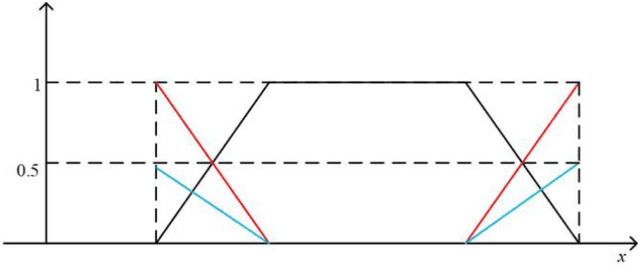
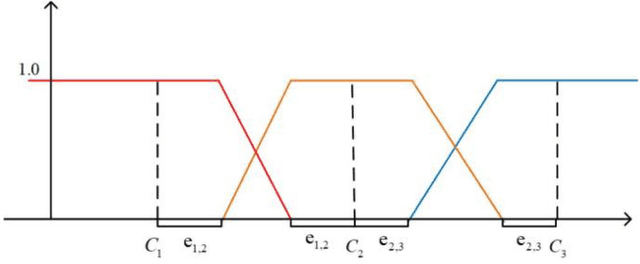
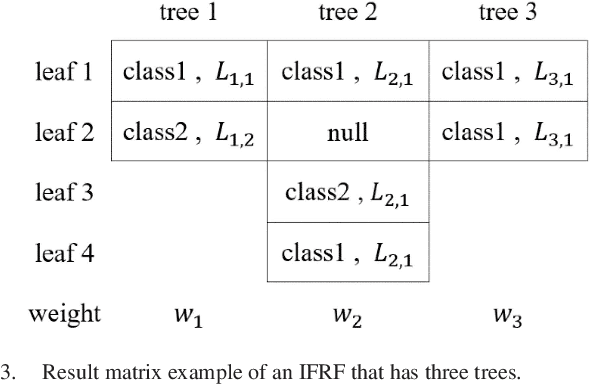
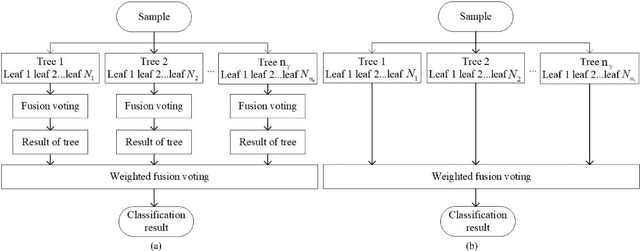
Abstract:Classification is essential to the applications in the field of data mining, artificial intelligence, and fault detection. There exists a strong need in developing accurate, suitable, and efficient classification methods and algorithms with broad applicability. Random forest is a general algorithm that is often used for classification under complex conditions. Although it has been widely adopted, its combination with diverse fuzzy theory is still worth exploring. In this paper, we propose the intuitionistic fuzzy random forest (IFRF), a new random forest ensemble of intuitionistic fuzzy decision trees (IFDT). Such trees in forest use intuitionistic fuzzy information gain to select features and consider hesitation in information transmission. The proposed method enjoys the power of the randomness from bootstrapped sampling and feature selection, the flexibility of fuzzy logic and fuzzy sets, and the robustness of multiple classifier systems. Extensive experiments demonstrate that the IFRF has competitative and superior performance compared to other state-of-the-art fuzzy and ensemble algorithms. IFDT is more suitable for ensemble learning with outstanding classification accuracy. This study is the first to propose a random forest ensemble based on the intuitionistic fuzzy theory.
DeepMA: End-to-end Deep Multiple Access for Wireless Image Transmission in Semantic Communication
Mar 21, 2023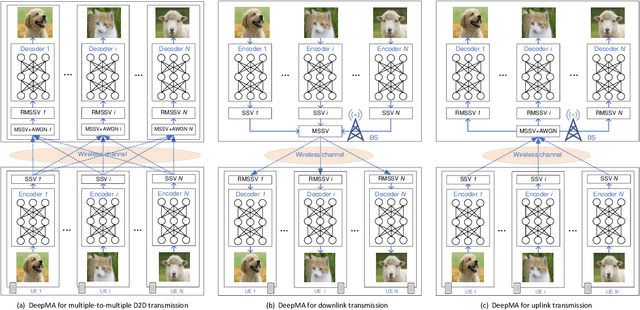


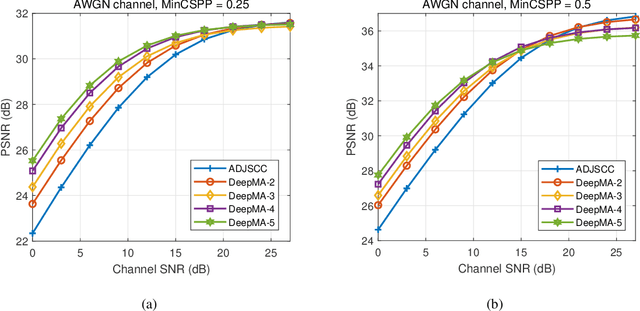
Abstract:Semantic communication is a new paradigm that exploits deep learning models to enable end-to-end communications processes, and recent studies have shown that it can achieve better noise resiliency compared with traditional communication schemes in a low signal-to-noise (SNR) regime. To achieve multiple access in semantic communication, we propose a deep learning-based multiple access (DeepMA) method by training semantic communication models with the abilities of joint source-channel coding (JSCC) and orthogonal signal modulation. DeepMA is achieved by a DeepMA network (DMANet), which is comprised of several independent encoder-decoder pairs (EDPs), and the DeepMA encoders can encode the input data as mutually orthogonal semantic symbol vectors (SSVs) such that the DeepMA decoders can recover their own target data from a received mixed SSV (MSSV) superposed by multiple SSV components transmitted from different encoders. We describe frameworks of DeepMA in wireless device-to-device (D2D), downlink, and uplink channel multiplexing scenarios, along with the training algorithm. We evaluate the performance of the proposed DeepMA in wireless image transmission tasks and compare its performance with the attention module-based deep JSCC (ADJSCC) method and conventional communication schemes using better portable graphics (BPG) and Low-density parity-check code (LDPC). The results obtained show that the proposed DeepMA can achieve effective, flexible, and privacy-preserving channel multiplexing process, and demonstrate that our proposed DeepMA approach can yield comparable bandwidth efficiency compared with conventional multiple access schemes.
 Add to Chrome
Add to Chrome Add to Firefox
Add to Firefox Add to Edge
Add to Edge